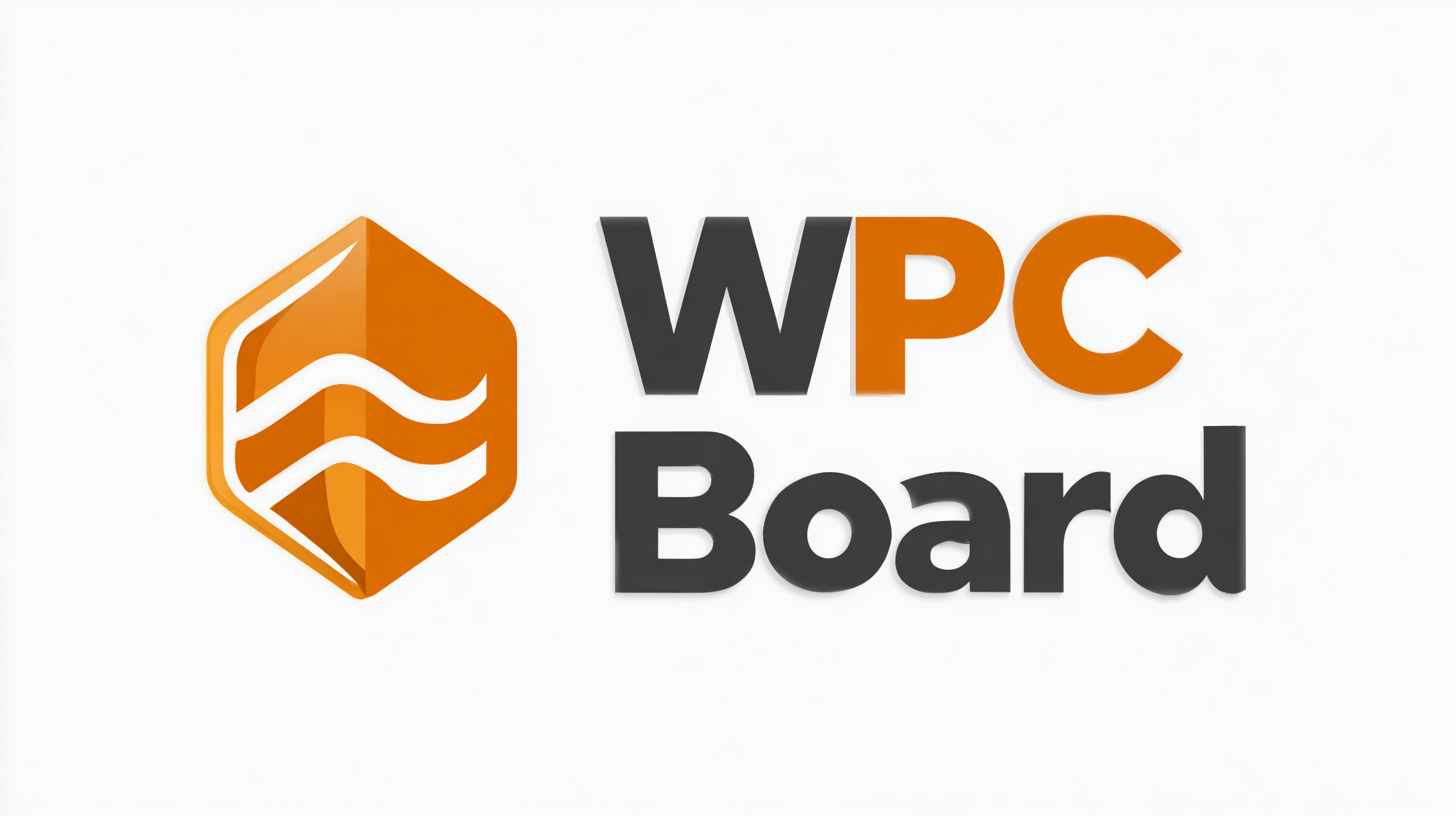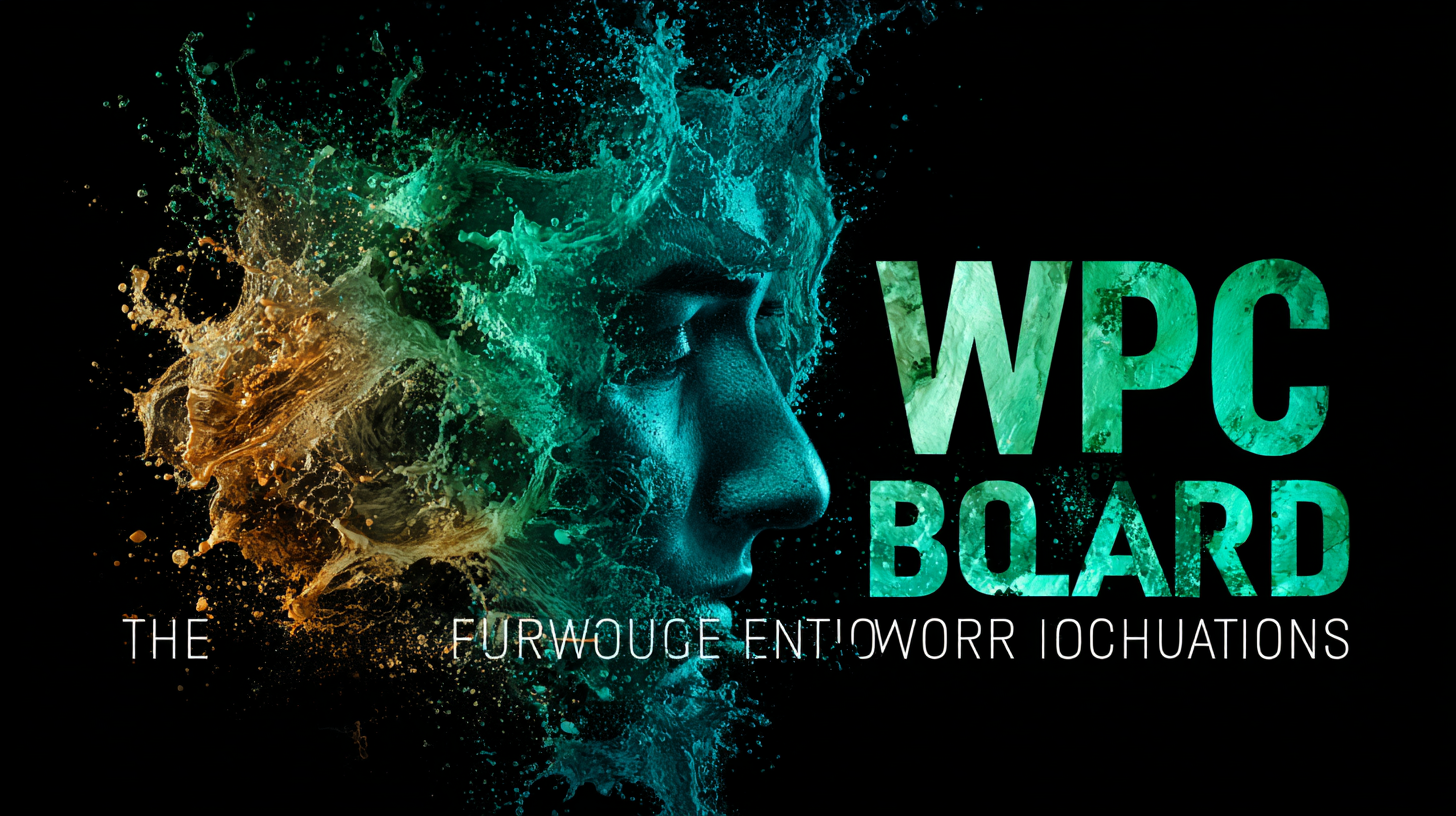Shandong Xiangying New Materials Technology Co., Ltd.
Shandong Xiangying New Materials Technology Co., Ltd.
 As the demand for sustainable materials continues to surge, the WPC board industry is at the forefront of innovation, poised to transform the construction and manufacturing sectors by 2025. According to a report by MarketsandMarkets, the global WPC market is projected to reach $10.16 billion by 2025, driven by increasing environmental awareness and the necessity for eco-friendly alternatives to traditional materials. WPC boards, made from a blend of wood fibers and thermoplastics, offer a viable solution that not only reduces plastic waste but also enhances durability and aesthetic appeal. This blog aims to explore the trajectory of sustainable innovation within WPC board technology, examining key developments, industry challenges, and future opportunities as the sector strives to align with global sustainability goals.
As the demand for sustainable materials continues to surge, the WPC board industry is at the forefront of innovation, poised to transform the construction and manufacturing sectors by 2025. According to a report by MarketsandMarkets, the global WPC market is projected to reach $10.16 billion by 2025, driven by increasing environmental awareness and the necessity for eco-friendly alternatives to traditional materials. WPC boards, made from a blend of wood fibers and thermoplastics, offer a viable solution that not only reduces plastic waste but also enhances durability and aesthetic appeal. This blog aims to explore the trajectory of sustainable innovation within WPC board technology, examining key developments, industry challenges, and future opportunities as the sector strives to align with global sustainability goals.
As the global construction industry increasingly embraces sustainability, the adoption of Wood-Plastic Composite (WPC) board technology is set to transform under the influence of circular economy principles by 2025. Reports from the Global WPC Market indicate that the sector is projected to grow from approximately $5 billion in 2020 to over $10 billion in 2025, driven by a stark shift towards environmentally friendly materials. This significant growth reflects a broader trend towards the circular economy, where products are designed for reuse, recycling, and reducing waste.
Industry experts predict that innovations in WPC technology will not only enhance the durability and aesthetic appeal of these materials but also increase their recyclability. According to a study by the European Composites Industry Association, using recycled plastics in WPC production can reduce the carbon footprint by up to 50%. Furthermore, implementing closed-loop systems for WPC boards can ensure that materials are repurposed at the end of their lifecycle, aligning with the circular economy's ethos. This shift is vital as consumers become more environmentally conscious and seek sustainable options in construction materials, ultimately shaping the future of WPC technology.
| Trend | Description | Expected Impact by 2025 | Key Benefits |
|---|---|---|---|
| Biodegradable Materials | Incorporation of biodegradable composites into WPC boards to reduce environmental impact. | Increased adoption rates among environmentally conscious businesses. | Lower carbon footprint and enhanced sustainability profile. |
| Recycling of WPC Waste | Use of recycled materials to produce new WPC boards, promoting circular economy. | Reduction in raw material costs and minimized landfill waste. | Cost savings and resource efficiency in manufacturing. |
| Smart WPC Solutions | Integration of IoT technologies for monitoring and optimization of WPC performance. | Increased market demand for high-performance building materials. | Enhanced product longevity and lower maintenance costs. |
| Sustainable Sourcing | Raw materials sourced from sustainable forests and reclaimed sources. | Improvement in corporate sustainability reports and consumer trust. | Enhanced brand image and compliance with regulations. |
| Enhanced Durability Techniques | New treatments and coatings to improve the lifespan of WPC products. | Higher adoption in demanding environments with extreme weather. | Reduced need for replacement and lower lifecycle costs. |
As the demand for environmentally friendly building materials grows, the Wood Plastic Composite (WPC) board industry is witnessing transformative changes. By 2025, several key industry standards are expected to shape the sustainable production of WPC boards, ensuring that manufacturers adhere to eco-friendly practices that minimize waste and maximize resource efficiency.
 One of the foremost standards is the use of recycled materials. Manufacturers are encouraged to incorporate recycled wood and plastic into their products, significantly reducing the reliance on virgin materials. This not only conserves natural resources but also promotes a circular economy. Tip: Look for WPC products that prominently feature their recycled content, as they contribute to a more sustainable building landscape.
One of the foremost standards is the use of recycled materials. Manufacturers are encouraged to incorporate recycled wood and plastic into their products, significantly reducing the reliance on virgin materials. This not only conserves natural resources but also promotes a circular economy. Tip: Look for WPC products that prominently feature their recycled content, as they contribute to a more sustainable building landscape.
Another critical aspect involves certifications related to emissions and toxicity. Standards such as LEED (Leadership in Energy and Environmental Design) encourage the use of low-VOC (Volatile Organic Compounds) materials, ensuring that indoor air quality is maintained. Tip: When selecting WPC boards, verify that they have been tested and certified for emissions, which can help create healthier living environments.
By adhering to these evolving standards, the WPC board industry is set to play a pivotal role in the sustainable building movement, paving the way for innovative technologies that prioritize environmental stewardship while satisfying market demands.
As consumers increasingly seek environmentally friendly alternatives, the demand for biodegradable additives in wood-plastic composites (WPCs) is on the rise. A comprehensive review highlights that natural fiber composites, using materials like jute, flax, and hemp, offer an eco-friendly substitute for conventional materials. Such innovations align with consumers' growing preferences for products that are not only biodegradable but also sourced from renewable resources, reducing reliance on petroleum-based options.
The plastic additives market is projected to expand from USD 47.70 billion in 2025 to USD 74.78 billion by 2035, reflecting a notable CAGR of 4.6%. This growth is largely influenced by the increasing integration of biodegradable biopolymers derived from renewable sources into WPC manufacturing. These biobased biodegradable polymers (BBP) are becoming a preferred choice, as they mitigate environmental pollution and enhance the sustainability profile of products made from WPCs. In this evolving landscape, innovations such as calcium carbonate additives are also making headway, improving the mechanical properties and overall performance of WPCs, promising a future that balances functionality and ecological responsibility.

As we navigate the future of sustainable innovation in WPC (Wood Plastic Composite) board technology, the integration of Life Cycle Assessment (LCA) becomes paramount. LCA is a methodological tool used to evaluate the environmental impacts of products throughout their entire life cycle, from raw material extraction to production, use, and disposal. This holistic approach enables manufacturers to identify areas for improvement, reduce waste, and enhance the overall sustainability of WPC boards.
When developing WPC boards, it's crucial to incorporate LCA early in the design process. One tip for manufacturers is to source eco-friendly materials that have a lower carbon footprint. This not only contributes to sustainability but also appeals to consumers seeking greener products. Additionally, regularly assessing the performance of materials and production methods through LCA can guide innovations that minimize resource consumption and energy use.
Another important tip is to collaborate with stakeholders, including suppliers and end-users, to develop a comprehensive understanding of the product's life cycle. This collaboration can lead to innovative solutions that address environmental concerns while also improving the product's marketability. By leveraging LCA in WPC board development, companies can not only comply with increasing regulatory standards but also position themselves as leaders in sustainable practice.
This chart represents the projected adoption rates of life cycle assessment (LCA) methodologies in the development of sustainable Wood Plastic Composite (WPC) boards from 2023 to 2025. The data highlights the increasing emphasis on sustainability in the materials industry.
As the demand for sustainable materials continues to rise, the WPC (Wood Plastic Composite) industry is witnessing significant regulatory advancements that shape production standards and sustainability practices.
These regulations are not just driving compliance but are also encouraging manufacturers to innovate in their processes. For instance, the need for eco-friendly sourcing of raw materials has led to the adoption of more sustainable practices in the procurement of wood fibers and plastics. This shift is pivotal as companies strive to minimize their environmental footprint while meeting consumer expectations for green products.
Moreover, the establishment of WPC manufacturing plants is becoming increasingly streamlined due to detailed reports that outline necessary setups, costs, and machinery requirements. These insights allow new entrants and existing businesses to better navigate the complexities of setting up operations. The interplay between regulatory frameworks and industry practices sets the stage for a future where WPC products not only meet stringent standards but also contribute positively to environmental sustainability, enhancing their appeal in the marketplace. Understanding these dynamics will be crucial for stakeholders looking to thrive in this evolving landscape by 2025.
